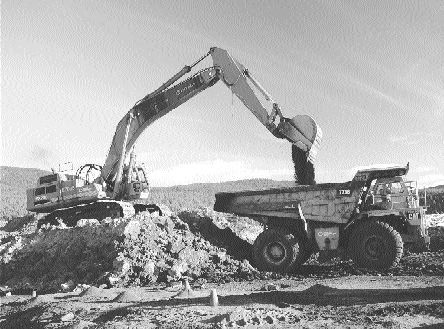Vancouver — Six years after receiving approval,
With transportation and port service contracts firmed up and debt financing and sales contracts in place, the company is making its debut as a coal producer and expects to turn a profit in the third and fourth quarters of this year.
The Willow Creek mine is the first new coal mine to open in western Canada in the past 20 years and, in light of surging coal prices, will likely not be the last. Coal prices, which are negotiated once a year, have risen almost 40%, to US$45 per tonne this past April from US$33 in 2003, and are set to increase further as demand from China drives the market for steel production, the chief use of coal.
The Willow Creek operation is 45 km west of the town of Chetwynd and accessible by road and highway. The Willow Creek coal licences and lease cover more than 125 sq. km in the Liard mining division.
The Willow Creek property is underlain by the Jurassic-Cretaceous Minees group and the Lower Cretaceous Bullhead John groups. The Gething formation contains economically significant coal seams, nine of which are exposed in a series of northwest-trending folds.
The economic seams vary in true thickness from 1 metre to more than 7 metres, with an aggregate true thickness of 20 metres over the total mining section.
Three types of coal will be produced from the operation, with about two-thirds comprising pulverized-coal-injection (PCI) coal — a cheap alternative to coking coal used in the steel industry. The Willow Creek PCI coal is a high-quality, low-sulphur, low-ash product.
A little less than a third of the reserves slated for production are higher-value coking coal, and there are a few hundred tonnes of thermal coal which will be blended with the other types. The lower three seams will be blended as PCI.
A preliminary feasibility study of the Pine Pass Block included a reserve estimate of 9,546,000 recoverable tonnes and 8,924,000 salable tonnes. The coal reserves and resources are based on 427 holes drilled from 1979 to 1981 and from 1994 to 1997.
In 1998, the company received a project approval certificate from the province’s Environmental Assessment Office for a 900,000-tonne-per-year operation.
“The mine has begun production on a shoestring budget,” says Mark Fields, Pine Valley’s vice-president. “We just needed to put roads in for a six-kilometre haul to the railroad; the pit was already dug. Production will start at the rate of forty-five thousand tonnes per month with the existing facilities. The coal is clean and doesn’t need to be washed.”
The company plans to more than double annual production from the current permitted level to 2 million tonnes, which will require a permit amendment.
Pine Valley has started extracting, crushing and trucking coal from the open pit to its rail siding, from where it will be loaded on to rail cars and shipped to the Neptune Bulk Terminals coal port in North Vancouver. From there, it will be shipped to steel mills in Asia and Europe.
The mine will initially produce at the rate of 45,000 tonnes per month over the summer. The company is purchasing and installing permanent crushing, handling and train-loading equipment. Construction of a coal wash plant should be completed by July 2005; this will allow the company to increase capacity and begin production of its higher-value coking coal.
Capital costs for the next phase are estimated at $18-21 million. The company expects its recent $3-million equity financing and US$7.6-million debt facility, together with cash flow from coal sales, will be enough to finance capital costs and provide working capital over the next year.
Marubeni of Japan is providing the debt financing and will enter into a minimum 600,000-tonne coal purchase and sale agreement over two years. Marubeni will be the company’s exclusive agent for sales of Willow Creek coal into Japan, Korea and Taiwan.


Be the first to comment on "Pine Valley starts coal mine in BC"